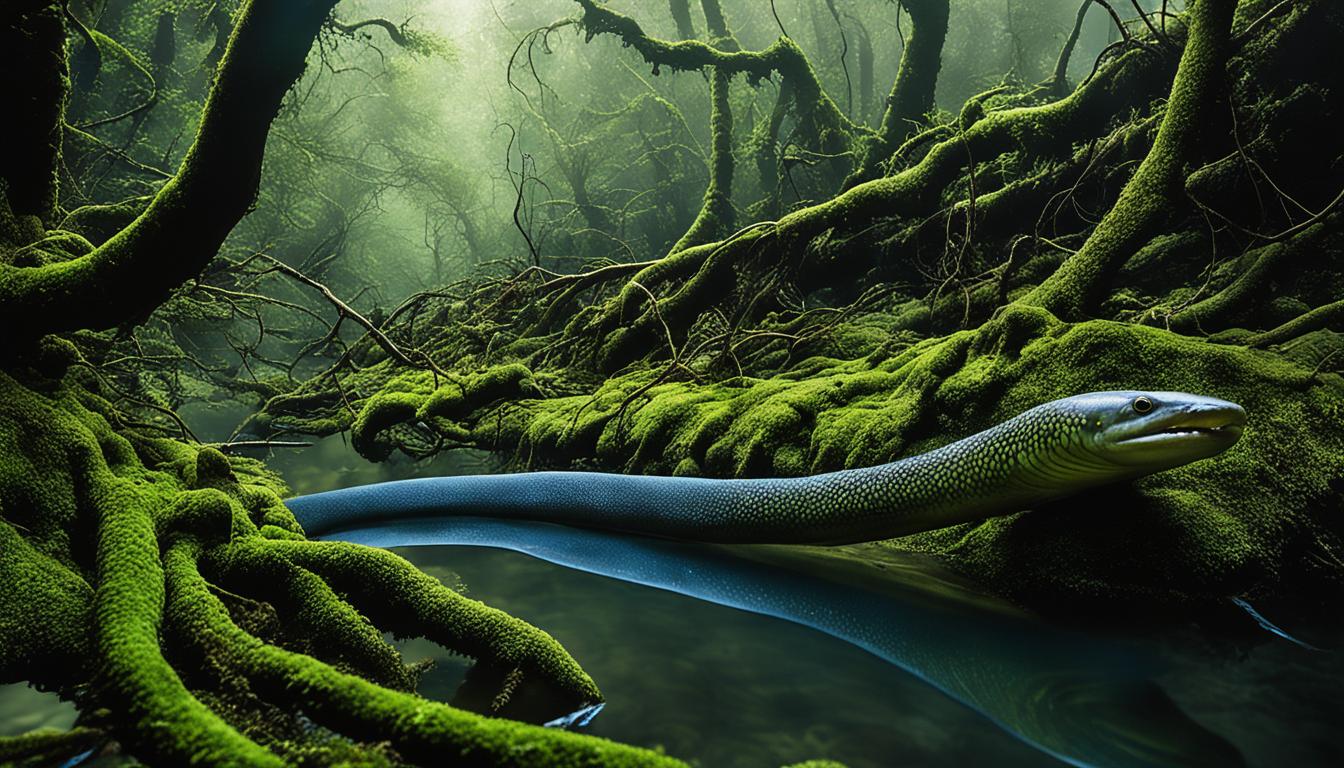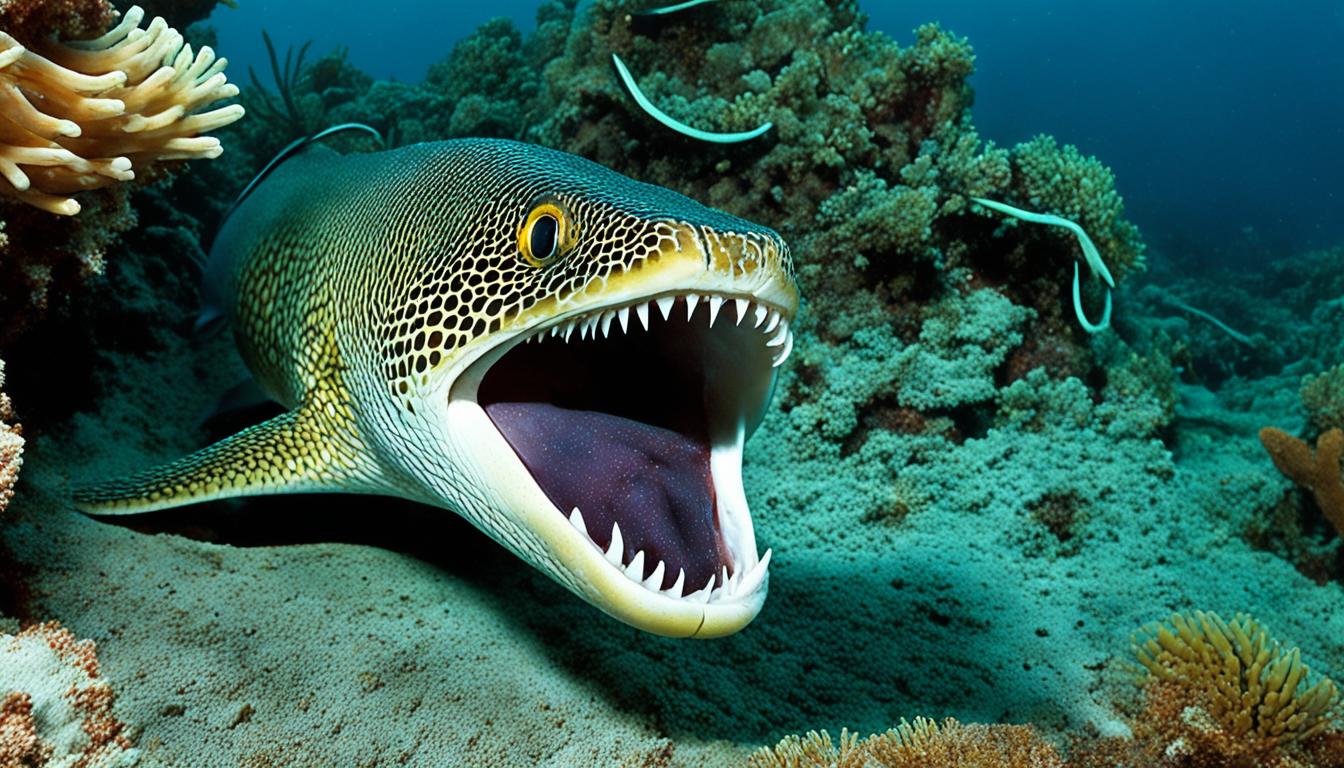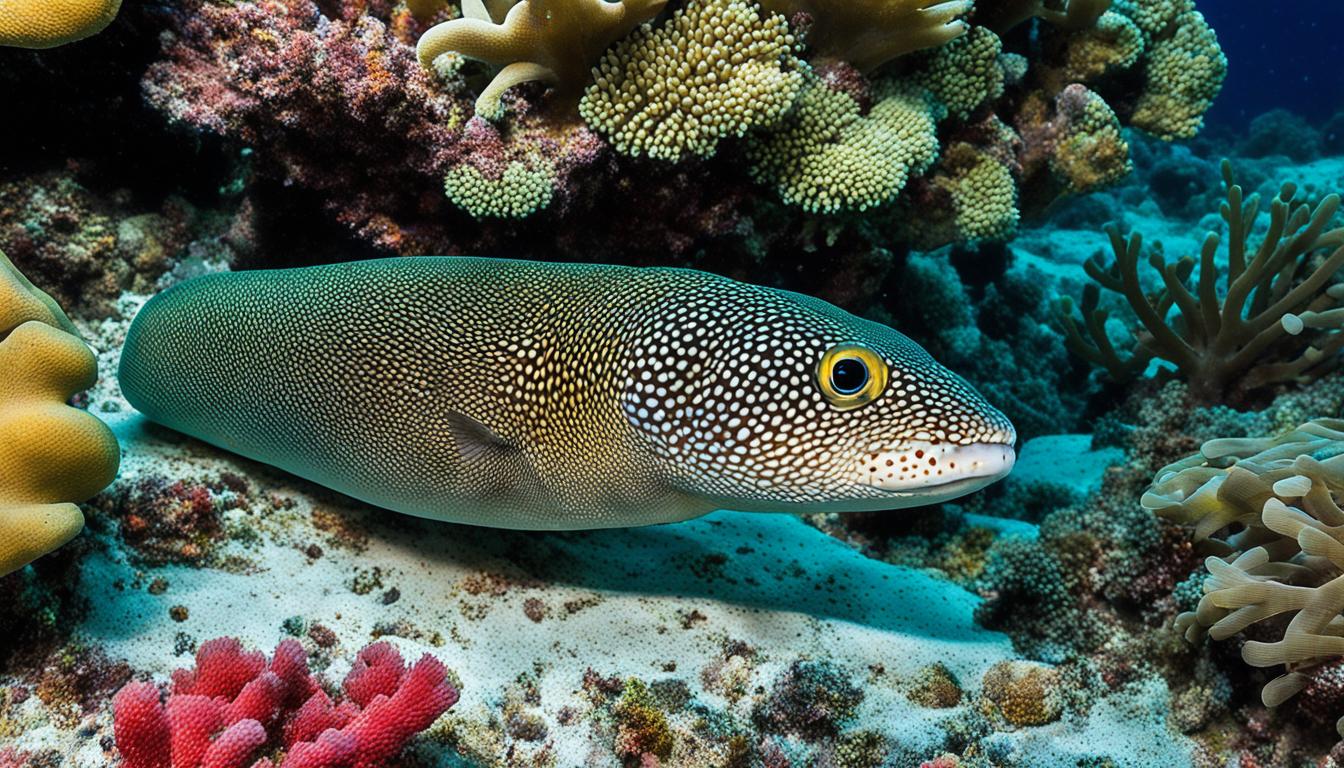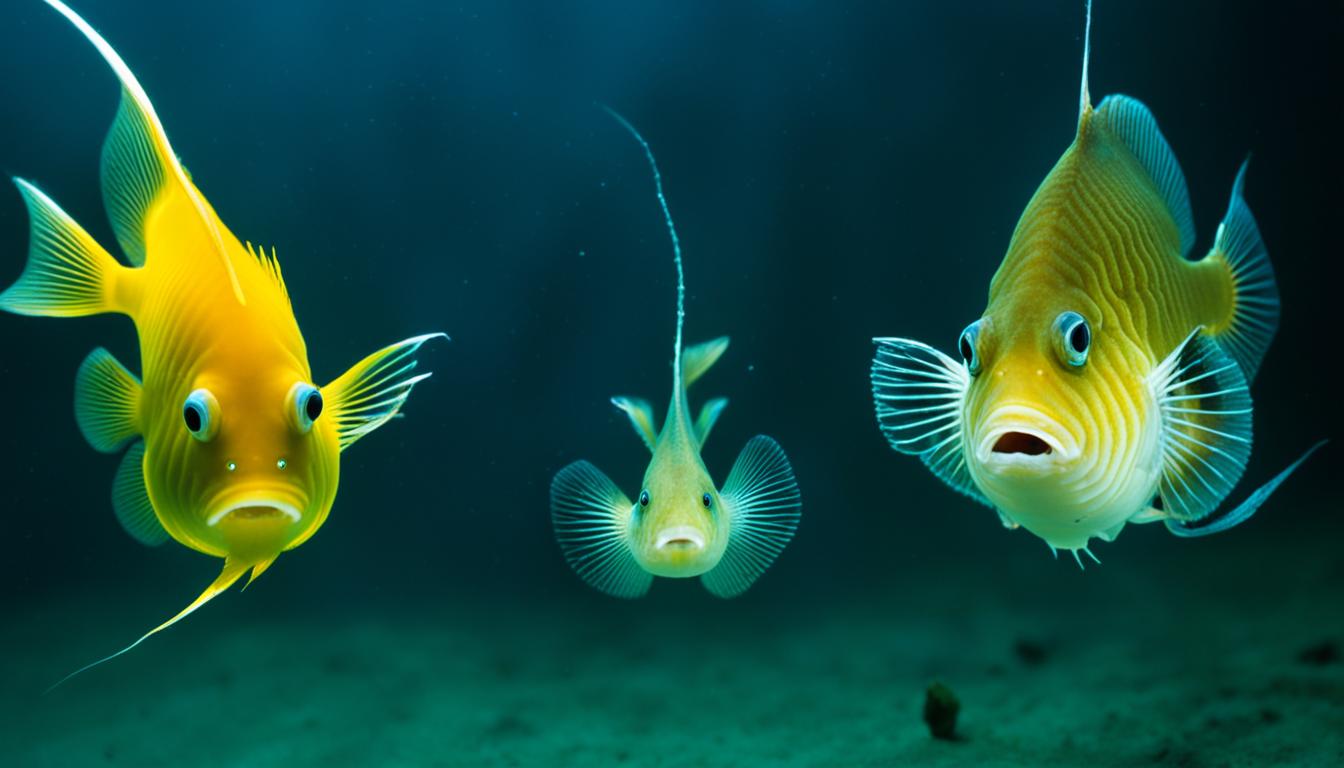Electric eels, known as Electrophorus electricus, live in the murky waters of South America. They thrive in slow-moving rivers and wetlands. These areas include muddy pools, calm parts of the Amazon, and ox-bow lakes.
Knowing where electric eels live helps us see their importance in their ecosystems. They are top predators in their home. This makes them a key part of their environment.
Electric Eel Habitat and Environment
Electric eels live in various freshwater places that suit their needs. Knowing where to find electric eels is key for those who want to study or see them. They like the muddy bottoms of rivers and the deep, shady parts of pools. These spots are perfect for electric eels.
Characteristics of Electric Eel Habitats
Looking for electric eels? You’ll find them in slow-moving waters like streams and ox-bow lakes. They like places that are shady and have muddy or rich soil bottoms. They also enjoy areas with plants that they can hide behind.
This makes a great home for electric eels, keeping them safe from predators.
Water Conditions: Oxygen Levels and Temperature
Electric eels need certain water conditions to live. They do well in water that’s not very oxygen-rich. In the dry season, this water might have less oxygen. But, electric eels can breathe air, showing how well they’ve adapted.
Temperature is also important to them. They like warmer water, which is common in their home in South America. Keeping the water at the right temperature is key for their health and how well they function.
| Habitat Characteristic | Significance |
|---|---|
| Slow-moving waters | Provide ample hunting grounds and reduce energy expenditure |
| Muddy bottoms | Offer suitable conditions for camouflage and nesting |
| Shaded areas | Protect from predators and harsh sunlight |
| Warm temperatures | Enhance metabolic functions and promote growth |
| Poor oxygenation | Encourages unique adaptations like air-surfacing behavior |
Where do electric eels live?
Electric eels live mainly in northern South America. They are found in countries like Brazil, Venezuela, Colombia, Ecuador, and Peru. The electric eel range includes big river basins like the Amazon and Orinoco. These places have the right mix of water for them to live.
Geographical Distribution in South America
These eels live in places with lots of water. The Amazon river basin is perfect for them, with calm streams and flooded forests. During the rainy season, these areas flood, making new homes for young eels.
Preferred Aquatic Environments
Electric eels like slow-moving waters. This lets them use their electric powers to find food and move around. They live in:
- Calm rivers and streams
- Flooded forests
- Ox-bow lakes
When it’s dry, they get stuck in small pools. This makes them easy prey for other animals. Knowing where they live helps us see how they’ve adapted to their environment.
Regions with Electric Eels
Electric eels live in South America, mainly in its vital waterways. They choose these areas for their unique habitats. These environments greatly affect their lives.
Major River Basins Home to Electric Eels
The Amazon and Orinoco rivers are key places for electric eels. These rivers change with the seasons, offering different homes for the eels. During heavy rains, the water levels go up, giving eels new places to hunt and hide from predators.
This shows how well electric eels adapt to their surroundings.
Flooded Forests and Ox-Bow Lakes
Electric eels love living in flooded forests. These places are full of life, giving eels lots of food and safety. They also live in ox-bow lakes, which are formed by rivers. These lakes are full of small fish and invertebrates, which are key to the eels’ diet.
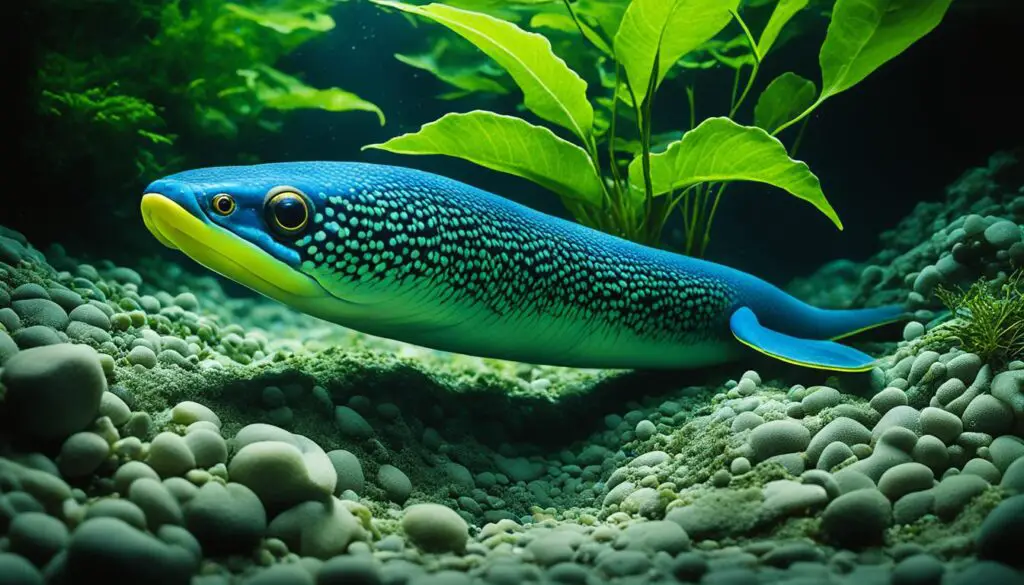
Life Cycle and Adaptations of Electric Eels
Electric eels have amazing ways to adapt throughout their lives, especially with the seasons. You might ask, where do electric eels live when the seasons change? And how do these changes help them survive?
Behavior During Wet and Dry Seasons
In the wet season, electric eels have more space to move around as the water levels go up. This helps young eels grow and develop better. But when the dry season comes, the water goes down, leaving less space for them.
This makes them more likely to be caught by predators since they are all in one place.
Feeding Habits and Predation Risks
Electric eels are at the top of their food chain. They eat fish, amphibians, and crustaceans thanks to their special abilities. They can make electrical pulses to stun prey and keep away from threats.
They use electrolocation to find their way in murky waters, which helps them hunt better even if they can’t see well.
Electric Eel Species and Their Ranges
The electric eel genus, Electrophorus, includes three main species: Electrophorus electricus, Electrophorus voltai, and Electrophorus varii. These species show how diverse and adaptable electric eels are. Each one is well-suited to its own electric eel home, with special features for survival in different places.
Electrophorus electricus lives mainly in the Guiana Shield. Electrophorus voltai is found in southern areas, stretching from the Brazilian Shield northward. Electrophorus varii thrives in central lowland areas, showing great adaptability to changing conditions. This shows how each electric eel species has its own special place in its ecosystem.
These species also have unique diets suited to the fish in their areas. They can survive in low-oxygen water, showing their special adaptations. Learning about these details helps us understand how electric eels play a key role in freshwater ecosystems.

